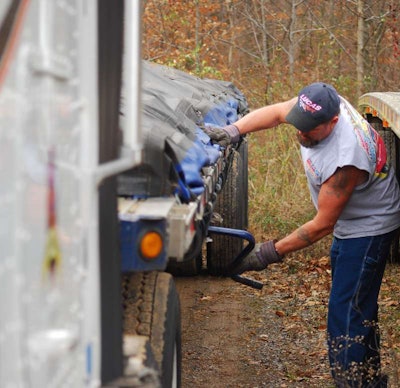
“Maybe this is accurate but it’s not the way I was taught and I don’t believe it is the best practice,” Wisconsin-based J.D. Bronson wrote in. “When you secure a clevis hook this way you’re only using a portion of the full rating of the stake pocket. Basically only one weld.” Bronson offered a preferred method to get more of the true strength rating out of stake pockets when utilized as anchor points:
If you can’t use a chain “boomer” on the rub rail and must use a stake pocket, the preferred way is to loop the entire chain around the stake pocket and then fasten the clevis hook onto the chain itself. If you look at it, we are then looping the stake pocket inside the chain. This affords the proper rating as we are using all sides of the stake pocket and welds.
I never drop a chain into a stake pocket.
Rick Vincent, with flatbed carrier Melton Truck Lines, says Bronson’s preferred method is the one they advise Melton operators to use. “The FMCSA will not give any clear guidance as it relates to this specific topic,” he says. “Their definition of ‘anchor point’ is very gray, and I think rightly so given the variations on equipment.”
Consult your trailer operators’ manual for its stake pocket strength ratings for specifics, given such variations. A few we’ve consulted recently do specify different ratings for pockets depending on how they’re constructed and how the hook is utilized.
Other tips? Let us know in the comments here.









